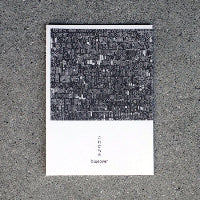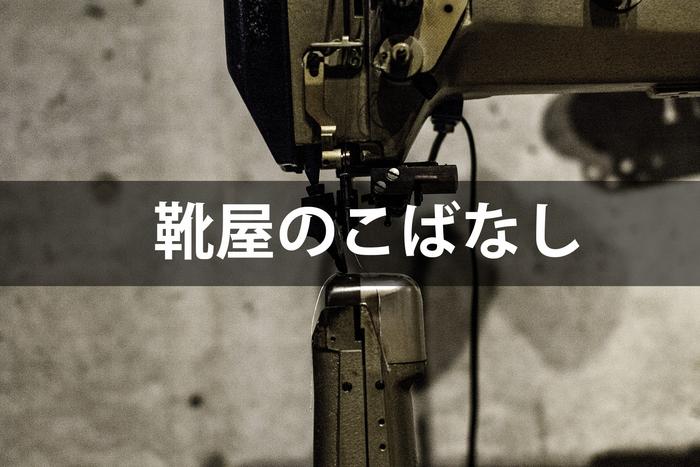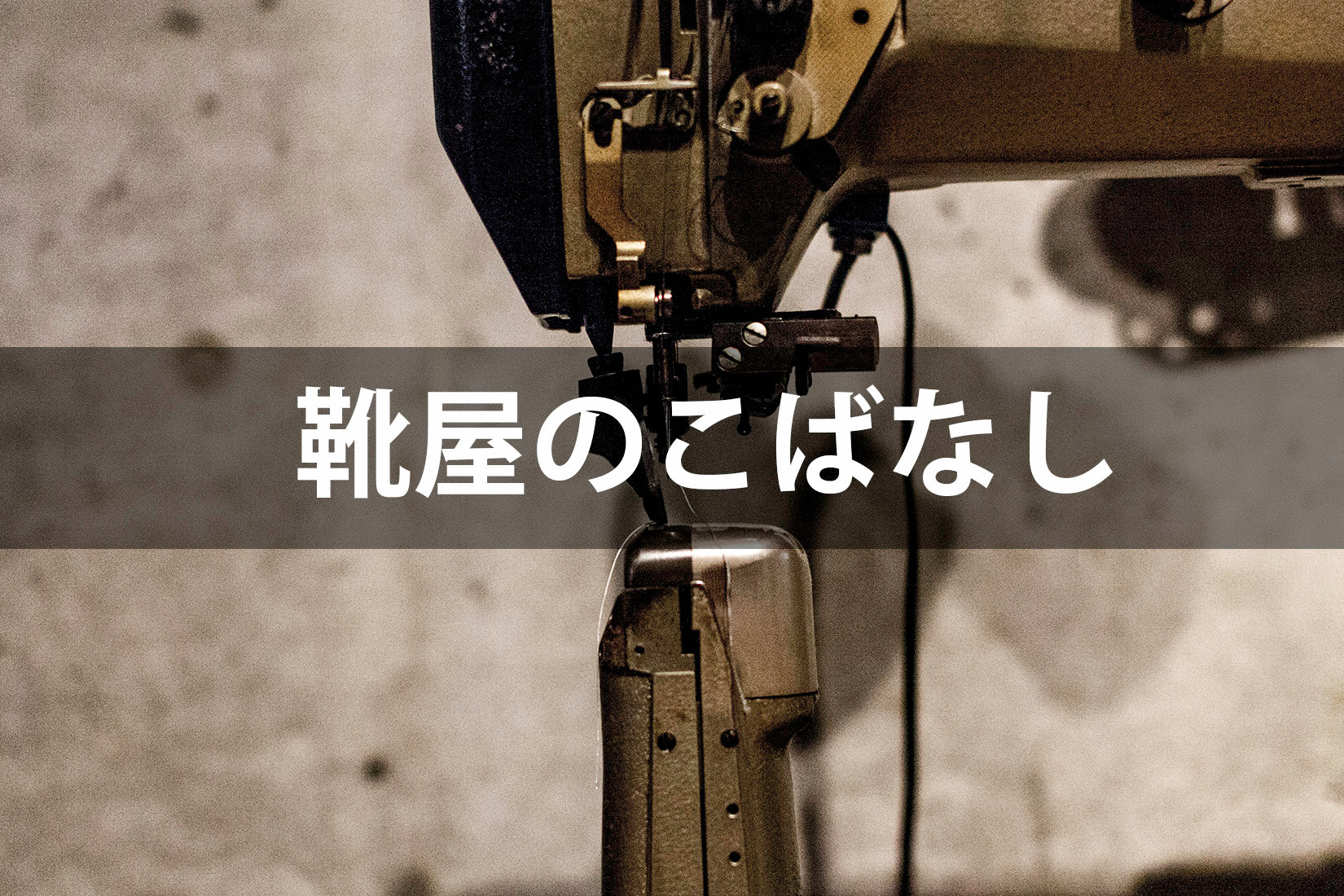Shoemaker's story #06|Leather story, part 2
 |
ZUCCO Blue over sample craftsman. The shoes are made by hand, from the pattern to the sewing and shoemaking. We also handle factory arrangements and material setup. @blueover_zucco |
This series is a compilation of several notes I wrote in order to explain my work, namely making shoes, as clearly as possible.
<Waterproof leather, a must-have item for rainy days>
It's raining again today. This year, it rains not only during the rainy season but also in the summer. The weather is changeable and it's often hard to read, so be careful with leather shoes and bags.
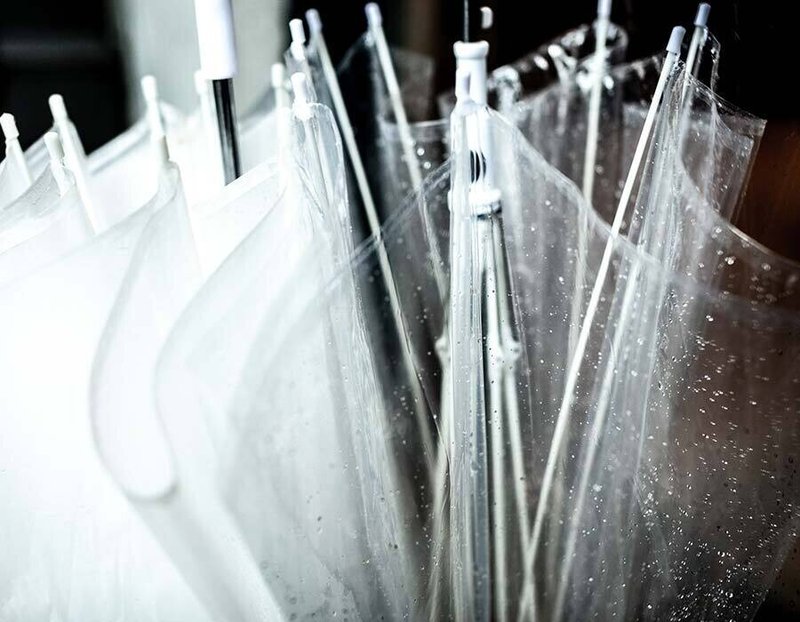
In such cases, you can rely on waterproof leather. I've been getting asked this a lot lately.
What is waterproof leather?
Personally, I didn't like the previous waterproof leather because it was processed into the leather surface and gave it a flat look. I like the look of leather and own leather products, but that feeling was lost in the surface treatment.
How many years ago? I was surprised when the tanner showed me ``current waterproof leather''. The smooth texture of the leather itself has disappeared, and the texture of the leather itself has not been compromised, and even if you ask me, I couldn't tell if it was waterproof. You can only tell by the fact that water is repelled.
Our blueover models are marco and PHOLUS, and we use waterproof leather.
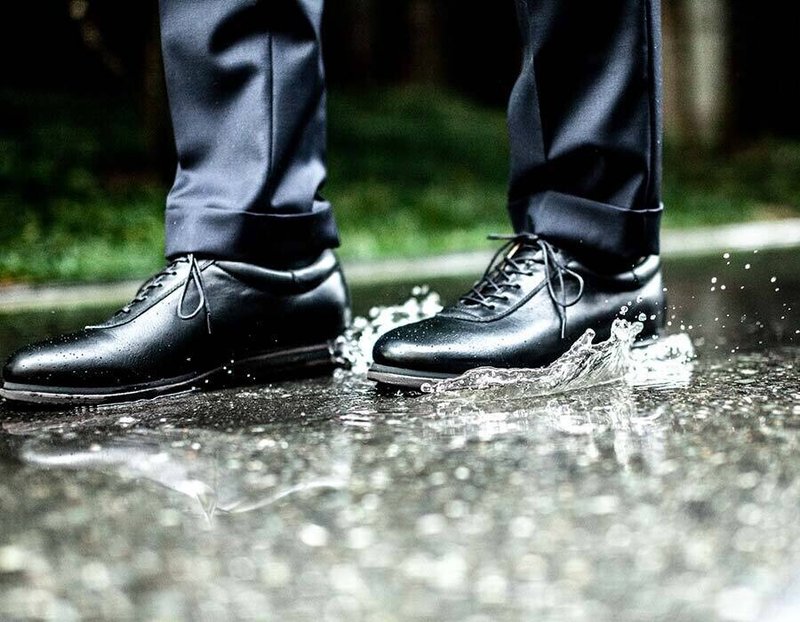
After we had a long-established tanner show us his waterproof leather, we worked together to create an ``original waterproof leather'' that has both beautiful luster and waterproof functionality.
During the leather tanning stage, a waterproofing fattening agent is infiltrated into the leather itself. As long as the leather fibers remain, the waterproof function will be maintained. It is a material that combines appearance and functionality.
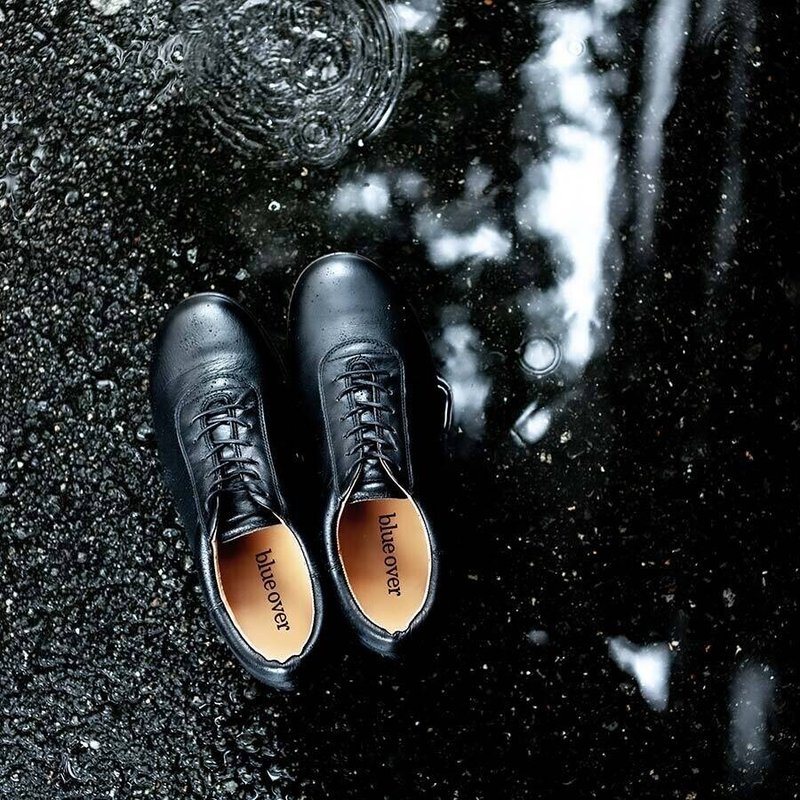
It has become commonplace for leather to be susceptible to water, but the time may come when it is common for leather to be waterproof.
Japan has a lot of rain and the weather is unpredictable. I have a feeling that waterproof leather will become an increasingly necessary item in the future. It seems that the field of activity will be expanded.
<Best things about mixed tanning>
As I mentioned earlier, the two typical methods of tanning leather are tanning and chrome tanning. Today we will talk about ``mixed tanning,'' a tanning method that combines the best of these two tanning methods.
What is mixed tanning?
Also called combination tanning. It is a tanning method that combines two or more tanning methods .
Chrome-tanned leather is often treated with tannins. It has a little more hardness than chrome tanned leather, and although it changes slowly over time, you can still enjoy it.
It is softer and more stretchy than leather that has been tanned only, so it is easier to process such as sewing. It is also more resistant to heat and water than tannin alone.
In other words, mixed tanning is leather that has the benefits of both chrome tanning and tanning. However, it cannot compete with the good points of chromium and tannin.
Chromium is superior to chromium in terms of elasticity, heat resistance, water resistance, etc., and tannin is superior in aging and hardness compared to tannin. *Physical properties seem to change depending on the ratio of chromium and tannin in mixed tanning.
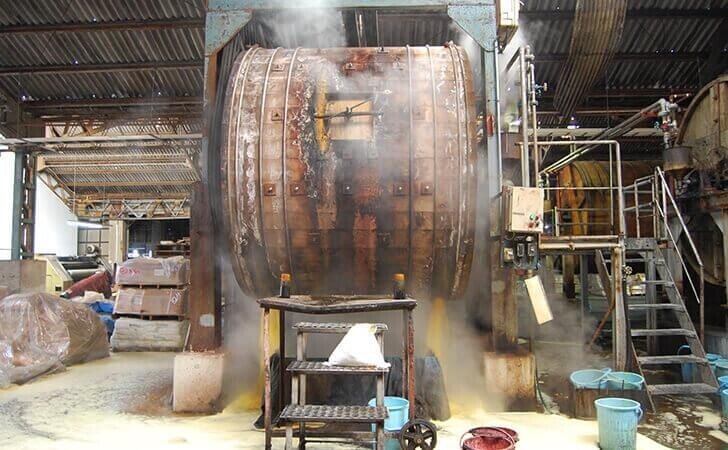
Consider the uses of each
So how is it actually used?
Tanned products are also used for shoe soles, belts, bag handles, and shoulder parts. Tanned leather is difficult to stretch, so its unique characteristics are utilized.
Chrome tanning is used in a wide range of products, including the uppers of bags and shoes, car seats and furniture. I think most leather products that require sewing work are chrome tanned. Colors can also be expressed vividly.
Mixed tanning is often used for the same purposes as chrome, such as bag and shoe uppers. It is also sometimes used in combination with tannins.
For example, one of our other brands, WONDER BAGGAGE's 2waytote bag, is easy to understand: the handle is made of tanned tanned leather, and the bottom part called the hook is mixed tanned.
Think about it with WONDER BAGGAGE's 2waytote
It would be a problem if the handle stretches out as you use it. Tanning is suitable. If the bottom part is made of tannin, it will be hard and may cause the leather to crack. Tannin also tends to stain, so there are concerns about using it in areas where it may come in contact with the ground. That's why we chose mixed tanning, which is soft to the touch, easy to process, and less prone to stains than tannins.
The bottom part also changes over time, although it changes more slowly than the belt part. The bottom part is naturally soft, so you won't notice any difference in aging.
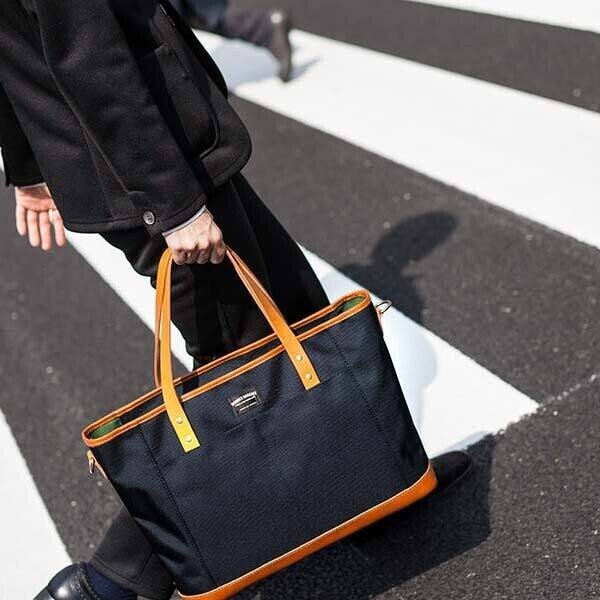
Afterword
In the end, I believe that all tanning methods have their advantages, and it is important to understand the advantages of each and incorporate them into your products. If you discuss and decide which material is best to use while consulting with the leather shop and the factory that processes the product, you will end up with a better product.
<About leather dyeing - dye finishing, pigment finishing, and everything in between. >
Previously, I wrote about ``tanning,'' which turns hides into leather. After tanning, the leather is colored and finished, used in a variety of products, and released into the world.
Color finishing method
The finishing methods for coloring can be roughly divided into four types.
- Raising the ingredients
- Dye finishes (aniline finishes are also included here)
- pigment finish
- Semi-aniline finish
Each has its own merits and demerits, and the good points are utilized in the product.
Raising the ingredients
As you might be able to tell from the name, it is a raw leather that has not been dyed in any way. Since nothing is done to it, you can feel the original texture of the leather.
Something that is easy to imagine is skin-colored tanned leather. As you use it, you can enjoy how it changes over time. Disadvantages include poor durability, water resistance, and heat resistance. Easy to stain. She's naked, so she's not wearing makeup.
When people put on makeup, it also blocks UV rays. If you think about it that way, wearing your bare skin without makeup is a good idea. It's easy to understand if you think about it that way. Blueover's Mikey's pig lining is just raised.
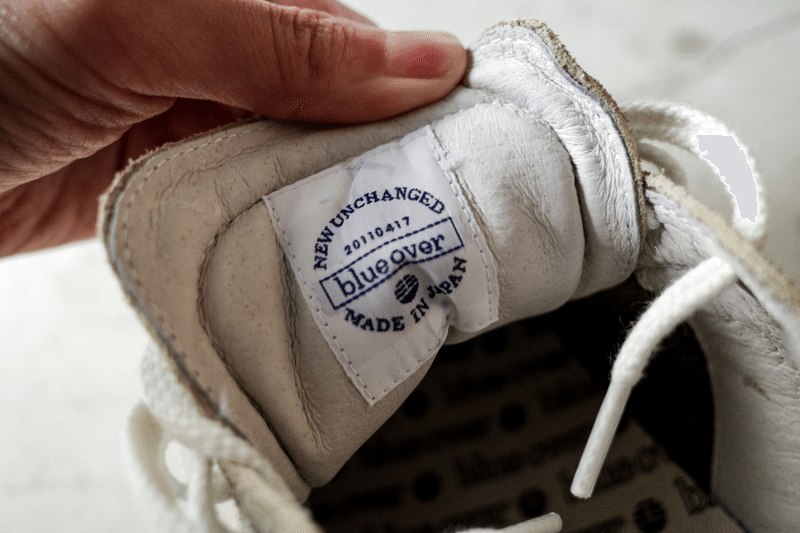
Dye finishes (aniline finishes are also included here)
It is one of the methods for dyeing. Dissolve in water or solvent to dye leather. By applying color not only to the surface of the leather but also to the inside of its tissue, it is possible to express transparent tones while retaining the unique texture of the leather . The surface is finished close to its original condition, so it retains its original feel and appearance . It has a leather-like finish.
The disadvantages are that it is sensitive to water and its color fades easily. Also, in the case of smooth leather, if the leather is not clean, the scratches and patterns inherent in the leather will be noticeable. Dye finishing is not often used for large cows such as steers, as they get into fights, get bitten by insects, and become leathery over the course of their lives. It is often used for small cattle such as calfs and kips.
However, at Blueover, it is used for the outer leather of the standard Mikey. mikey is velor. Since it is brushed leather, it is only finished with dye.

Aniline (synthetic dye) finish is one of the dye finishes. There are also natural dyes such as vegetable dyes and casein (a protein found in milk, etc.).
Aniline is one of the most commonly used dyes. This is because both tanned leather and chrome-tanned leather dye well. That's why you often hear the term aniline finish.
pigment finish
It is used to coat leather to hide scratches and stains. Once the pigment is applied, the leather can be finished with a uniform color and feel, and even vivid colors can be expressed.
The downside is that some pigment-based leathers tend to be more noticeable when scratched, as the coated areas will peel off. If you use too much pigment, you'll be applying heavy makeup and the original flavor of the leather will be diminished.
There are also benefits. Since it is covered with a membrane, it is also durable. It's also quick and easy to care for. The color does not easily fade even if it gets wet with water.
Semi-aniline finish
A finishing method that combines the best aspects of aniline finishing and pigment finishing . By using dye as the main ingredient and a small amount of pigment, you can hide scratches and stains on the leather. It is also very difficult to create the desired color using dyes alone, so pigments are also used for the final color matching. Even if you get the desired color when it's a liquid, it may turn out to be a different color once it soaks into the leather.
Since it contains only a small amount of pigment, it retains the natural texture of leather, giving it a glossy and transparent look.
Although it is inferior to bare-raised or dyed finishes, you can still enjoy the beautiful changes over time. It is said that most leather finishes are done this way. It doesn't fade easily and can be used for things like car seats and sofas.
In blueover, a good example would be ``Obappa''.

White is a color that is difficult to express through dyeing alone, and is often created using only pigments. The smooth leather used in "Okappa" has a semi-aniline finish. By applying a thin layer of pigment, it creates a beautiful white color, and since the main ingredient is dye, it has a glossy and transparent feel, allowing you to enjoy the original atmosphere of leather.
Digression
I heard this from a tanner. Rubber erasers or sand erasers are sometimes used to remove stains from leather, but bread is also recommended. Compared to using an eraser, it doesn't damage the leather surface, so it's less likely to fade.
I think it will be full of crumbs, but give it a try.
<About the leather lining of shoe soles>
Have you ever heard of the word lining? The etymology of the word is liner, and when I looked it up, the meaning was as follows.
Explanation of liner 1 In baseball, a batted ball that flies low and straight through the air. line drive.
2. Regular ships, regular passenger planes, or scheduled long-distance trains.
3. The back of a coat that can be removed. Also, a protective lining or covering.
4 A tool for drawing lines. "eyeliner"
<From goo Japanese dictionary>
The lining we are talking about here is the part that becomes the lining for the upper of the shoe, so we are referring to the ``protective lining'' in ③.
If you look at the photo below, the white part (the back side of the blue leather) where your foot goes in and touches your skin is the lining. It not only protects your feet, but also absorbs sweat from your feet, so it also affects the environment inside your shoes.

Lining used in blueover
Introducing the linings we use.
- pig lining
- cow lining
- fabric
pig lining
Thin, light, and resistant to friction. It also has excellent breathability, so it is often used as a shoe lining.
In Japan, pigskin is a 100% self-sufficient leather, so it is relatively inexpensive among leathers. It has high color reproducibility and is used by men and women of all ages.
At blueover , we use bare-raised fabrics, which are used for mikey, bobbed hair, SHORTY, etc. (back of the waist). The bobbed hair is light beige for SHORTY and white for mikey.
Lining shops dislike ``whitish colors.'' If it is stored, it will yellow and become unsaleable, so there are only a few lining shops that carry it. Both light beige and white are purchased from a lining shop that I found after searching for them.
cow lining
It is thicker than pork lining. It is strong, breathable, moisture wicking, and durable. It has small pores and is a material used in high-end shoes because of its good appearance.
At blueover , we originally used unfinished cow lining, but the color faded, so now we use unfinished leather with a slight lacquer finish. We created the camel color together with a lining shop in Tokyo. It is used in models such as McKay's marco and Goodyear's PHOLUS.
The insole of these two models has a cup insole made of the same material.
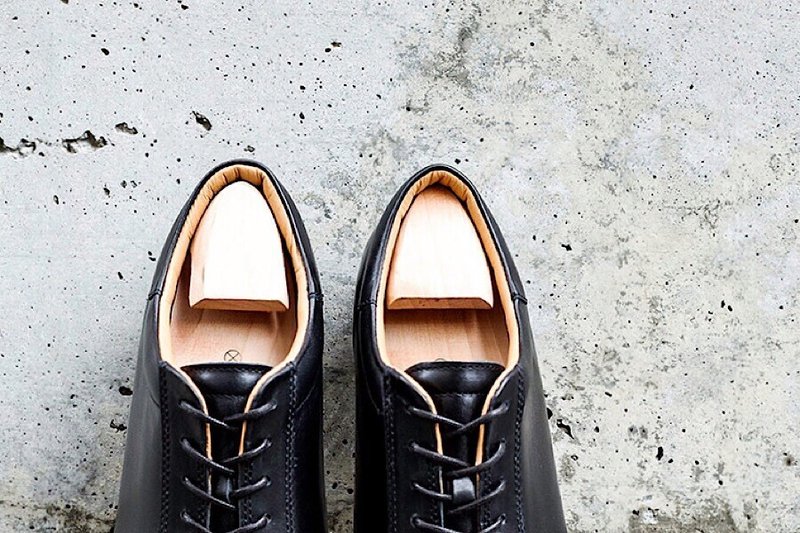
fabric
Some models use functional materials. It has excellent breathability and quick-drying properties, and many have antibacterial and sterilizing properties. The look is sporty, so you can express the sneaker-like feel. Also, compared to shoes with leather lining, your feet will adapt to them faster.
blueover uses urethane applied to knit or nylon non-woven fabric. It is used on Mikey and SHORTY, but on Mikey it is located on the back of the toe, so it may be difficult to tell at a glance.
Afterword
In addition to leather and fabric, the lining of Japanese shoes is made of various materials such as synthetic leather, artificial leather, and fabric. It's hard to see at a glance, so many people may not pay much attention to it when making a purchase.
However, the original purpose is often not fulfilled.
It protects your feet. Absorbs sweat and keeps shoes in good condition.
If you keep this in mind and pay a little attention to the lining when purchasing, you will be able to use your shoes for a long time.

